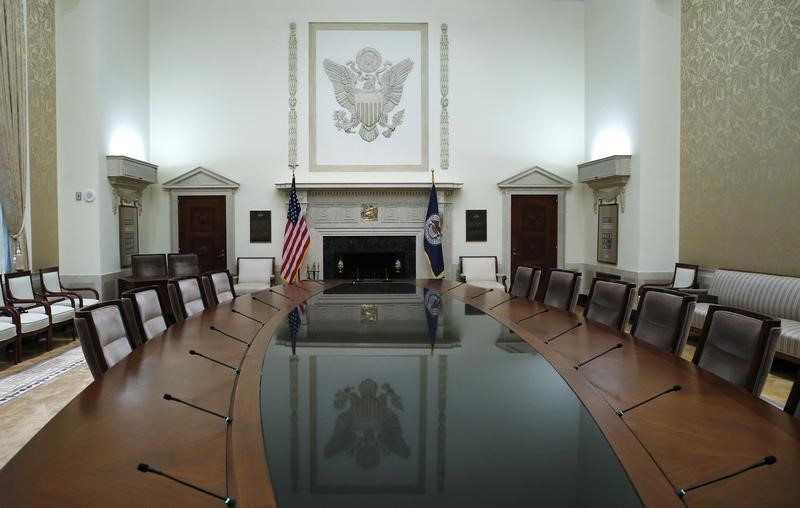 © Reuters. Rising Stars, Higher Rates, and the Future of Fed Communication
© Reuters. Rising Stars, Higher Rates, and the Future of Fed Communication(Bloomberg) — The Federal Reserve this week is expected to move one step closer to the interest rate that marks the difference between tight and easy money.
Just where the so-called neutral rate sits is the subject of keen debate within the Fed, with officials saying it could be anywhere between 2.3 percent and 3.5 percent in the longer run. Shift above it and the economy should cool, goes the theory. Undershoot it, and even lower unemployment and higher inflation are likely.
But Governor Lael Brainard, a past bellwether for policy shifts, is zeroing in on a different way to frame the debate.
Rather than focusing on where neutral is in the long-run, she has explained in recent speeches that she thinks the short-run neutral rate could increase because recent fiscal stimulus is boosting growth. That would call for additional rate increases to stabilize the economy.
If her colleagues echo her line, they’d be able to hike rates higher before describing policy as “restrictive” — a politically unpopular word in an era where President Donald Trump has criticized rate hikes. It could even give officials cover to raise rates to a higher peak, said Jacob Oubina, senior U.S. economist at RBC Capital Markets in New York.
“You’re literally talking about what the Fed’s goalpost is,” Oubina said. “This is going to be the debate next year that the market needs to pay attention to.”
The idea of short-run neutral rates that respond to shifts in the economy isn’t new: the Fed regularly considers estimates of the near-term rate at policy meetings. But officials usually explain their policies in terms of the longer-run rate, which is slower-moving and depends on structural forces in the economy.
Brainard’s recent focus suggests she is taking a hawkish turn herself: she was once known for favoring low rates, and her comments suggest she might favor overshooting the long-run neutral, often called r-star. Her framing could also help explain that the Fed is serious about its policy projections, which in June showed that the median Fed official expects to hike rates above their longer-run level by late 2019. Updated forecasts will be released on Wednesday following the conclusion of the Fed’s two-day policy meeting in Washington.
“Before Governor Brainard’s speech, if you asked most investors about r-star, just broadly, they’d say something like: it’s quite low right now, but it should rise,” said Steve Friedman, senior economist at BNP Paribas (PA:) Asset Management. “I think she’s flipped the argument now for many investors, where they’re thinking, gee, maybe the neutral rate is elevated.”
This week could shed light on whether her framing, which she also aired in late May, is getting wider buy-in. Chairman Jerome Powell will probably be asked about the outlook in his post-meeting press conference on Wednesday.
To date, Brainard’s flying solo. Officials generally explain policy relative to the long-run level in public.
Powell is skeptical about neutral estimates in general, but his most recent public remarks focused on “guiding policy by the stars” and discussed the out-year Fed projection. John Williams, doubly influential as both Federal Reserve Bank of New York president and the co-author of a widely-accepted r-star model, talked only about the long-run estimate in a May 15 speech devoted to neutral rates.
Williams suggested r-star had moved down to 0.5 percent in inflation-adjusted terms from a more historically normal 2.5 percent. He also cast a skeptical eye over the idea that longer-run neutral could shift much higher thanks to Trump’s tax cuts. That’s partly because their effect on growth falls more in the near term.
His remarks underscore a key feature of long-run neutral: it’s slow-moving. Focusing on the rate needed to stabilize the economy period by period, as Brainard is doing, would let policy makers communicate around a benchmark that changes with conditions.
That shift in emphasis would bring perks and drawbacks.
On the plus side, telling Congress that rates are rising but remain in slightly-easy territory because tax cuts have changed underlying economic dynamics is palatable. Telling them that rates are restrictive relative to long-run neutral estimates because the Fed needs to slow growth and inflation, while amounting to the same thing, is a tougher sell.
“It is clearly an easier message to defend,” said Lou Crandall, a former Fed economist and chief economist at Wrightson ICAP (LON:) in New York.
On the downside, sizing up the policy rate against a more changeable goalpost invites added imprecision and potential confusion into the conversation.
“They are not rigorous concepts: they are rigorous theoretical concepts, they are not rigorous analytical concepts,” Crandall said. “It does highlight just how fuzzy these concepts really are: you have two different ways of framing it that may be equally valid.”
In the end, navigating by a different star may lead to an identical outcome. Explaining policy in terms of the short-run neutral doesn’t actually change the prescription: if you think unemployment is below its sustainable level and inflation is destined to head higher, you’d favor raising interest rates under standard Fed economic models.
Seth Carpenter, chief U.S. economist at UBS Securities LLC in New York and a former Fed economist, said Brainard’s position reflects “a standard, middle-of-the-committee view.”
“It’s a really model-consistent way to think about the world,” he said. “It might help to reinforce that you’re leaning against the wind.”
Source: Investing.com



























